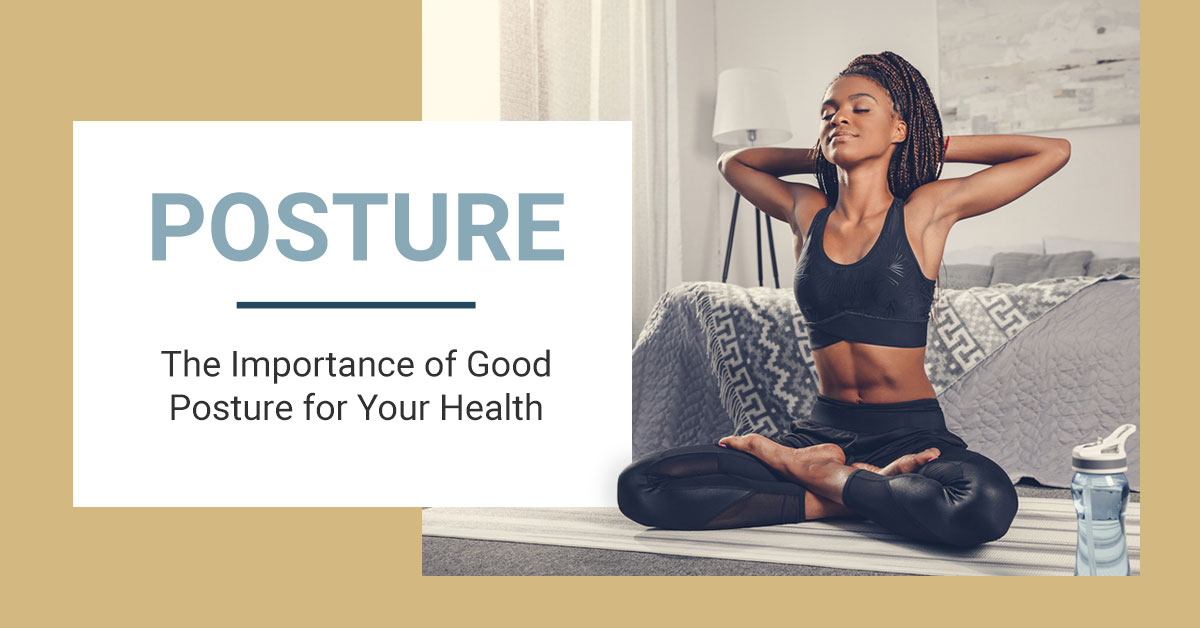
The Importance of Good Posture for Your Health
Just about every child has had a parent, grandparent, or teacher tell them not to slouch. Good posture is an important part of how you carry yourself, but it isn’t all about appearances. Knowing how to hold your body and keeping everything in alignment is good for your health, keeping the least amount of strain on your body and protecting yourself from injury. It also helps give your internal organs enough space to function better. But what is good posture and how can you use it?
Proper Posture Positions
Posture is essentially the way you hold your body. Having good posture means that your body is standing, sitting, or lying down in correct alignment, with the right amount of muscle tension to allow for good, even weight distribution of your bodyweight through your joints.
Slouching is becoming more frequent as our population becomes more sedentary because it requires little to no effort. It can lead to deconditioned or easily fatigued muscles along the spine and it can place strain on spinal ligaments which over time can cause the ligaments to stretch and deform, making it more difficult to sit up straight for long periods. Slouching isn’t normal and we should strive for a better natural position that fulfills these requirements.
In some cases however, it must be learned. Muscle memory helps your body keep your natural position without any thought, so it all comes down to regular practice and training yourself. Since there are different positions for sitting, standing, and lying, here is a basic understanding of the correct positions.
Sitting
- Keep both feet on the floor or footrest
- Ankles should be in front of or level with the knees and the knees at or below hip height
- Maintain a small gap between the back of your knees and the edge of your seat
- In chairs with a backrest, use it to support your low- and mid-back, adding a back support, if needed
- Relax your shoulders and draw your shoulder blades together slightly, sitting straight up. Do not hunch your back
Standing
- Keep your feet shoulder-width apart with knees slightly bent
- Put most of your weight through your heels and the balls of your feet
- Pull your shoulders back and stand straight and tall
- Tuck in your stomach slightly
- Arms should hang down to the sides of your body naturally
- Keep the head level whilst keeping your earlobes in line with your shoulders
Laying Down
- Avoid sleeping on your stomach
- Use a pillow that properly supports your head and try to keep the spine straight
- If laying on your side, keep a pillow between your legs
- If laying on your back, a pillow under your legs can help to decrease pressure on the lower back
Ways to Improve Posture
If you notice that you are struggling to keep good posture, there are some things you can consider for help.
- Get a better mattress. The general recommendation is to find a firm, comfortable mattress that provides equal support for the whole body. Some people prefer a softer mattress, so it’s important to try one out before buying to make sure it’s the right match for you.
- Exercise. Working out your core muscles and improving your overall level of conditioning will help to keep good posture for longer without feeling fatigue. Being a healthy weight also helps to reduce the effects of poor posture because there is less load in one area.
- Replace your desk chair. If you work at a desk, investing in a great chair will make a big difference to your ability to maintain a better sitting posture.
- Move around more. Don’t spend too much time in one position. Whether you are sitting, standing, or laying down, certain muscle groups are being used to sustain one position. Once fatigue is reached, it is harder to maintain good posture. Getting up and moving around helps to relieve some of the pressure and it gives your muscles a chance to rest.
- Wear a posture device. There are some posture-helpers that you can wear that not only keep your shoulders in a good position, but they can also help you to be more mindful of the way you are sitting and standing. We recommend this for short term use to help you understand how to hold a good position by yourself whilst you’re increasing your own muscular endurance. This helps you to become more responsible for your own posture, it enables you to sit better for longer and it avoids creating a co-dependence on the posture device.
- See a chiropractor. A quick visit to a chiropractor for an adjustment or some postural advice can make all the difference to maximising your comfort levels whilst maintaining good posture. It is easier to keep good posture when all your joints and muscles are in good working order.
The best benefit to having good posture is that it can help to prevent injury. Many people who suffer from back and neck pain have noticed that it can stem from holding poor posture for long periods of time. Try some of our suggestions for improving your posture and see how much better you look and feel.


